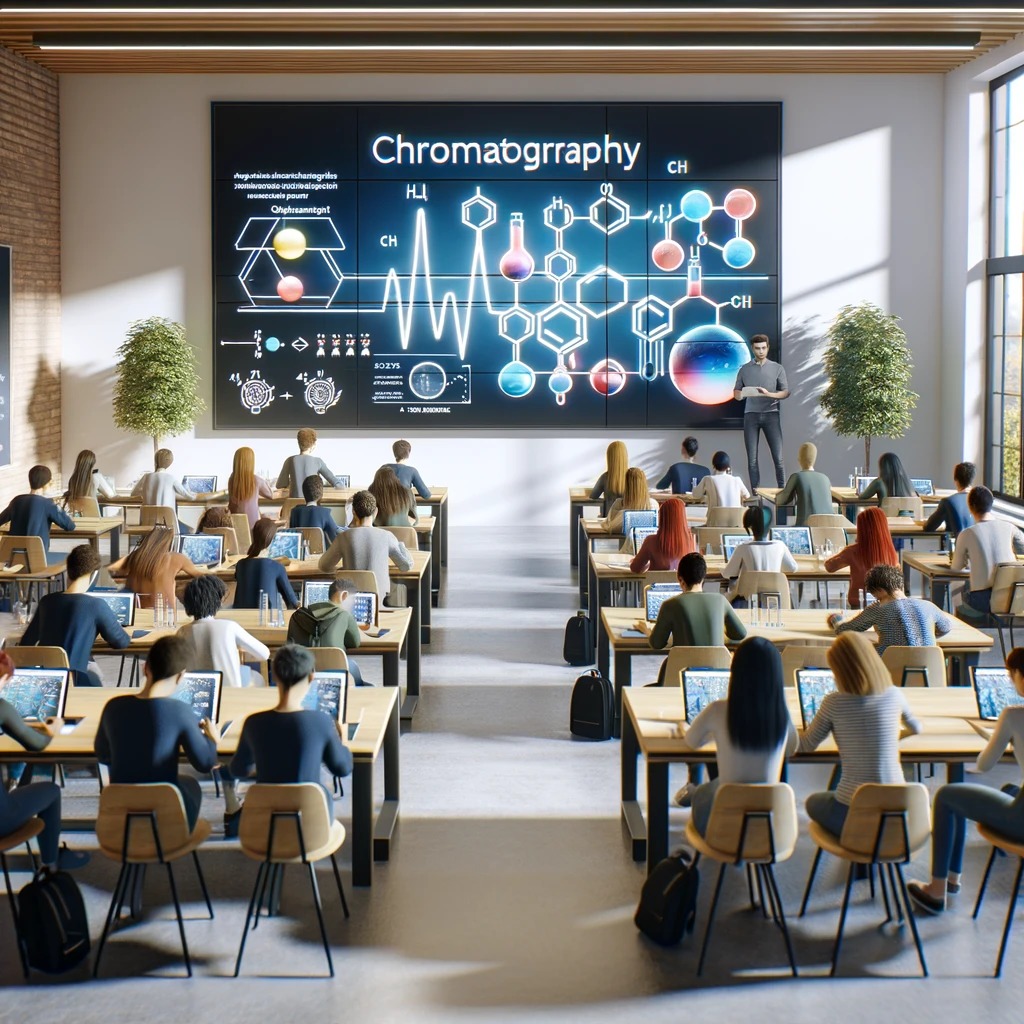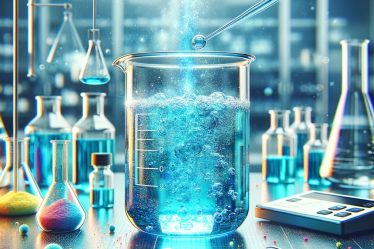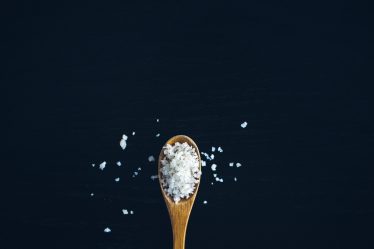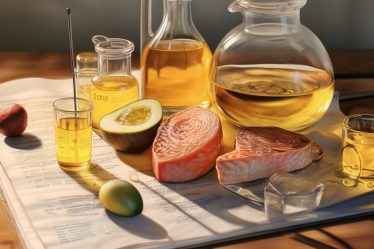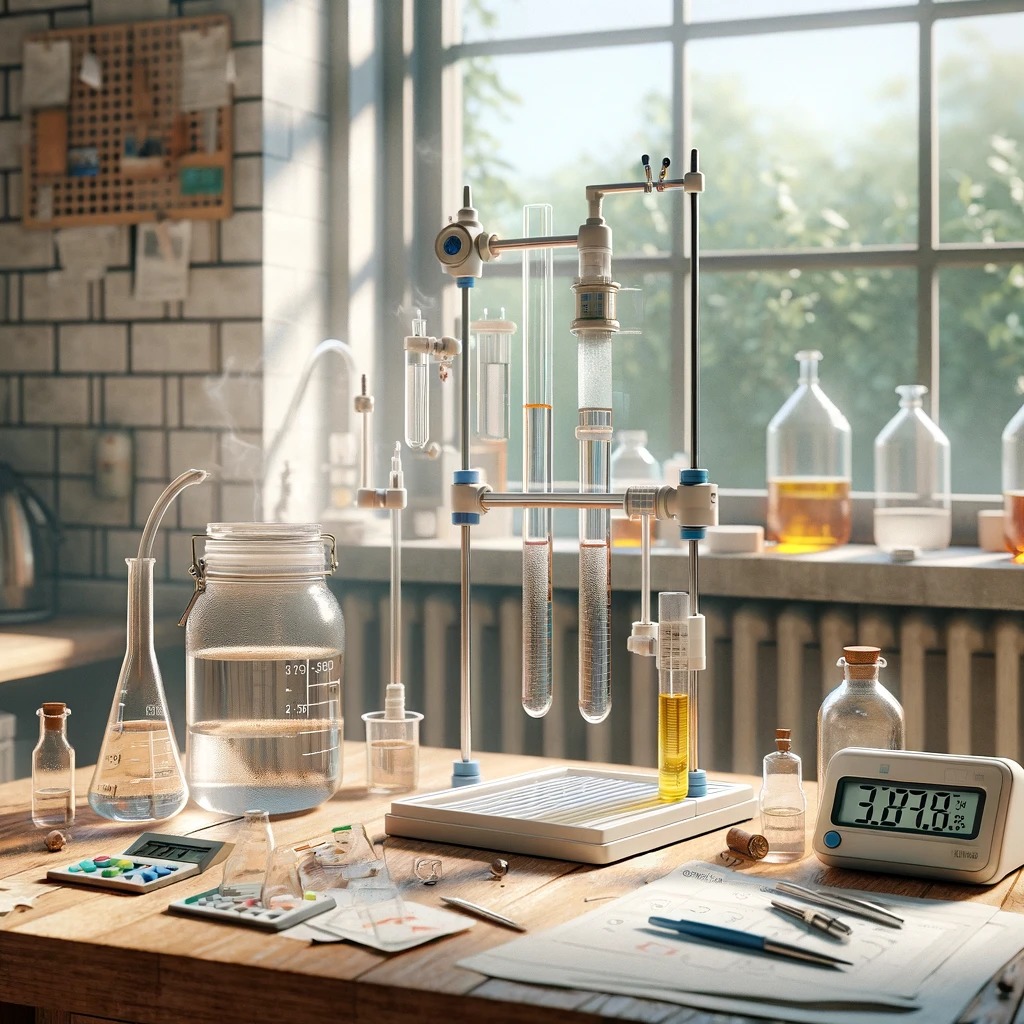
Welcome to your guide on chromatography, an essential tool in scientific laboratories worldwide. This technique is critical for separating mixtures and is used in various fields, from crime scene forensics to pharmaceutical manufacturing. As a student eager to learn, you’ll find chromatography to be a fascinating subject that, once understood, opens up a world of scientific inquiry. This guide introduces you to the basics of chromatography, discusses different techniques, and highlights several chromatography applications. Whether you’re studying chemistry or simply curious about this essential analytical method, this article will provide a solid foundation for understanding how chromatography is used to analyze complex mixtures in many aspects of scientific research.
We’ll cover the main types of chromatography, such as High-performance liquid chromatography (HPLC), Gas chromatography (GC), and Paper chromatography. You’ll learn how these techniques differ and where they are best applied in the laboratory. Furthermore, we’ll include study tips for students and offer insights into how personalized tutoring and private chemistry lessons can help deepen your understanding of chromatography.
Are you interested in other subjects? Read top free study guides for Biology, English, French, and Music.
Chromatography Basics – A Beginner’s Guide
What is Chromatography? Simple Definition and Goals
Chromatography is a method used to separate different parts of a mixture. It works by passing the mixture through two phases: a stationary phase that stays still and a mobile phase that moves. Think of it as a race where each part of the mixture moves at a different speed, allowing them to be separated and studied individually. The main goal of chromatography is to split the mixture into its individual parts so we can learn more about each one.
Step-by-Step Chromatography Process Explained
To understand how chromatography works, let’s walk through the basic steps:
- Preparation: You start by dissolving your mixture in a liquid or gas, which becomes your mobile phase.
- Application: Next, you introduce this mobile phase to the stationary phase. This could be a solid or a viscous liquid anchored in place.
- Separation: As the mobile phase flows through or over the stationary phase, the different parts of the mixture move at different speeds. This happens because some components are more attracted to the stationary phase and slow down, while others are carried faster with the mobile phase.
- Elution: Eventually, each part of the mixture moves far enough apart from the others to be individually collected as they exit the stationary phase.
The key terms here are the mobile phase (the liquid or gas carrying the mixture) and the stationary phase (the material the mobile phase moves through). The interaction between these two phases is what causes the separation. The speed at which each component of the mixture moves is often measured as its retention time, which is the time it takes for a component to pass through the system from start to finish.
The basics of organic and inorganic chemistry.
Essential Chromatography Techniques Uncovered
Chromatography is a pivotal technique in scientific research and industry, allowing for the separation of mixtures into their individual components. This section delves into the essential chromatography techniques students and professionals leverage.
Overview of Chromatography Methods for Students
Chromatography is an analytical and preparative method used to separate, identify, and quantify the components of complex mixtures. The primary chromatography techniques include:
- Paper Chromatography: Utilizes paper as the stationary phase and a solvent as the mobile phase to separate substances based on their solubility.
- Thin-Layer Chromatography (TLC): Involves a thin layer of material, such as silica gel, on a plate, which acts as the stationary phase.
- Column Chromatography: Separates mixtures through a column packed with a stationary phase, where different compounds elute at different rates.
- Gas Chromatography (GC): Separates and analyzes compounds that can be vaporized without decomposition.
High-Performance Liquid Chromatography (HPLC): An Analytical Deep Dive
High-Performance Liquid Chromatography (HPLC) is a highly efficient type of column chromatography that pumps a sample mixture or analyte in a solvent at high pressure through a column with chromatographic packing material. The packing material, or stationary phase, is typically made of small spherical particles for increased surface area, leading to better separation of components. HPLC is critical in analytical chemistry, where it is used to identify, quantify, and purify individual components of mixtures due to its high resolution and speed.
Gas Chromatography (GC) in Practice: A Detailed Look
Gas Chromatography (GC) is a common type of chromatography used in analytical chemistry for separating and analyzing compounds that can be vaporized without decomposition. It is handy for testing a particular substance’s purity or separating a mixture’s different components. The mobile phase in GC is a carrier gas, usually an inert gas like helium or nitrogen. The stationary phase is a microscopic layer of liquid or polymer on an inert solid support inside a piece of glass or metal tubing called a column. GC is widely used in various industries, including environmental monitoring to detect pollution, forensics for drug testing, and the chemical industry for purifying compounds.
Chromatography Types Compared: A Comprehensive Guide
Chromatography is a fundamental technique in scientific laboratories for analyzing complex mixtures. This section provides a detailed comparison of the most common types of chromatography, helping you understand their distinct mechanisms and applications.
The basics of Polymers and PET plastic.
Chromatography Comparison Chart: HPLC vs. GC vs. Paper Chromatography
The following table outlines the critical differences between High-Performance Liquid Chromatography (HPLC), Gas Chromatography (GC), and Paper Chromatography:
|
Feature |
HPLC |
GC |
Paper Chromatography |
|
Mechanism |
It uses high pressure to push solvents through a column packed with solid adsorbent material. |
Separates compounds based on their volatility and interaction with the stationary phase in a temperature-controlled environment. |
It relies on the capillary movement of a solvent through a paper that acts as the stationary phase. |
|
Uses |
Ideal for various applications, including pharmaceuticals, environmental monitoring, and food analysis. |
They are commonly used in forensic science, petrochemical analysis, and environmental monitoring. |
Often used in teaching labs for simple demonstrations and can be applied in the analysis of pigments. |
|
Efficiency |
High resolution and speed, capable of separating complex mixtures quickly. |
Very efficient for volatile compounds, offering high resolution and sensitivity. |
Lower efficiency and resolution, suitable for less complex mixtures. |
|
Sample Type |
Non-volatile, thermally stable compounds. |
Volatile and thermally stable compounds. |
Suitable for small, organic molecules. |
|
Analysis Time |
Moderate to fast, depending on the complexity of the mixture. |
Fast, especially with the use of capillary columns. |
Slow, as it relies on the passive movement of the solvent. |
How to Choose the Right Chromatography Method
Selecting the appropriate chromatography method depends on several factors:
- Nature of the Sample: Volatile substances are typically analyzed using GC, while non-volatile, thermally stable compounds are better suited for HPLC.
- Resolution Required: HPLC and GC are high resolution and suitable for complex mixtures, whereas paper chromatography is used for more straightforward analyses.
- Analysis Time: GC may be preferred if rapid analysis is needed due to its quick run times. HPLC is also relatively fast, while paper chromatography is slower and more suited for educational purposes or preliminary analyses.
- Complexity of the Mixture: HPLC is often the method of choice for highly complex mixtures due to its versatility and high separation capabilities.
Understanding these factors will guide you in choosing the most effective chromatography technique for your specific analytical needs.
Ethanol and Alcohols in chemistry, Fermentation, and how Beer is Made.
Practical Chromatography: Laboratory Techniques and Data Analysis
How to Conduct a Chromatography Experiment: A Step-by-Step Guide
Conducting a chromatography experiment requires careful preparation and execution. Here’s a step-by-step guide to ensure accuracy and safety:
- Preparation of the Stationary Phase: Depending on the type of chromatography, prepare the stationary phase (e.g., packing a column with adsorbent for column chromatography or preparing a thin-layer plate for TLC).
- Sample Application: Apply the sample mixture to the stationary phase. For TLC, this means spotting the sample on the plate; for column chromatography, it involves introducing the sample into the column.
- Development of the Chromatogram: Allow the mobile phase to move through the stationary phase. This carries the sample components at different rates based on their affinities.
- Detection: Once the mobile phase has passed through the stationary phase, detect the separated components. This could be through visual inspection under UV light for TLC or through a detector for column chromatography.
- Analysis: Analyze the chromatogram to identify and quantify the components.
- Safety Considerations: Always wear appropriate personal protective equipment, handle chemicals carefully, and dispose of waste properly.
Reading Chromatography Data: Understanding Results and Peaks
Interpreting chromatography data involves understanding the chromatogram, where the results are displayed as a series of peaks:
- Identification of Peaks: Each peak corresponds to a different mixture component. The time when a peak appears (retention time) helps identify the component.
- Retention Time: The retention time is specific for a given substance under set conditions and can be used to identify components by comparing to known standards.
- Peak Area: The area under a peak is proportional to the amount of the substance present. This quantification is often done with the help of software.
- Resolution: The degree of separation between peaks can indicate the purity of the separation and the effectiveness of the chromatography method.
Understanding these aspects is crucial for accurately interpreting chromatography data essential for qualitative and quantitative analysis in various scientific fields.
Don’t worry, you’re not the only one struggling with chromatographic methods. It’s a complicated area that requires a lot of understanding and theoretical knowledge. A private tutor in chemistry can assist you in this. You can also turn to a private teacher who offers individual lessons in chemistry or biochemistry.
Discover how Hydrogen Bonds and Covalent Bonds are formed, and learn to Differentiate Them from Ionic Bonds.
Study Tips for Chromatography
To excel in chromatography, consistent practice and study are essential. Work on experiments, analyze results and don’t hesitate to ask for help from tutors when concepts become challenging. They can provide the support needed to navigate complex topics. Additionally, explore scientific publications and online resources to broaden your knowledge base.
Are you looking for a chemistry tutor? Enter “chemistry tutor Glasgow” or “chemistry teacher Sheffield” on your preferred tutoring platform, such as meet’n’learn, to find a teacher who can meet your specific needs.
If you thrive in group learning environments, search “chemistry classes London” or “chemistry lessons Manchester” online to discover local schools offering chemistry lessons.
The Role of Chromatography in Science
Chromatography is vital for analyzing and separating complex mixtures, a process we’ve simplified in this guide. From understanding the basics to comparing techniques like HPLC and GC, we’ve provided a foundation for students to build upon.
For those aspiring to deepen their understanding, consider seeking guidance from a tutor. A knowledgeable tutor can offer personalized explanations and practical insights that enhance your learning experience.
Read more topics and expand your chemistry horizons! Our World of Chemistry offers a plethora of free educational blogs.
Frequently Asked Questions About Chromatography
1. What is chromatography used for?
Chromatography is used to separate and analyze the components of a mixture. It’s essential in fields like pharmaceuticals, forensics, and environmental testing.
2. Can chromatography identify substances?
Yes, compared to known standards, chromatography can identify substances based on their unique retention times and interaction with the stationary phase.
3. What are the main types of chromatography?
The main types include paper chromatography, thin-layer chromatography (TLC), column chromatography, gas chromatography (GC), and high-performance liquid chromatography (HPLC).
4. Why is the mobile phase important in chromatography?
The mobile phase is crucial as it transports the sample through the stationary phase, allowing for the separation of components based on their different movement speeds.
5. How can I improve my chromatography skills?
Practice in the lab, study chromatography theory, and consider working with a tutor to strengthen your understanding and technique.
6. Where can I find reliable resources to learn more about chromatography?
Look for peer-reviewed journals, textbooks, and reputable online courses. Additionally, a tutor can provide personalized resources and guidance.
Need help with biology topics? Explore our extensive collection of biology educational blog posts designed to simplify complex concepts for you. Whether it’s photosynthesis, osmosis, the intricacies of green algae, understanding bacteria and viruses, or delving into the fascinating world of genetics and cells, our resources have got you covered. Expand your knowledge and enhance your learning journey with us today.
References:
1. Chem Libre Texts
2. Britannica
3. Wikipedia
